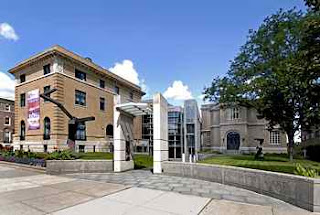 A new permanent exhibit that examines the life and times of President Calvin Coolidge will open August 6 at the 30th President’s state historic site and childhood home in Vermont.
A new permanent exhibit that examines the life and times of President Calvin Coolidge will open August 6 at the 30th President’s state historic site and childhood home in Vermont.
The Vermont Division for Historic Preservation will host the exhibit’s grand opening on Plymouth Old Home Day at the President Calvin Coolidge State Historic Site from 10 a.m. to 4 p.m. Gov. Peter Shumlin, Coolidge family members, and state officials will be among the honored guests at the opening of “Calvin Coolidge: His Life & Legacy” at the President Calvin Coolidge Museum & Education Center at 10 a.m.
“Calvin Coolidge embodied a respect for this beautiful state and the deeply-rooted pragmatism that present day Vermonters revere and endeavor to sustain,” said Gov. Peter Shumlin. “Visitors to Plymouth Village truly understand how this place shaped the man and why it remained so important to him throughout his life.”
“Calvin Coolidge: His Life & Legacy” will include interactive features, historic newsreels, a voice recognition station and a holographic image. The Division for Historic Preservation has worked closely over the past several months with Media-FX, a Montreal -based design firm noted for its innovative, interpretive displays.
The grand opening and Plymouth Old Home Day will continue with building tours and performances by pianist Abigail Charbeneau and the Green Mountain Brass Band. Also on exhibit this season is “First Pets: The Coolidge White House Animals,” which reveals the important role animals played in the private life and public image of the Coolidge family.
Plymouth Old Home Day, which dates back to the early 20th century, unites town organizations in a fun-filled festival of historic music, traditional craft and farm demonstrations, wagon rides and culinary treats. Activities will include:
* Old-time children’s games, apple head doll making with Susan Remington, Native American artifact tent from the Chimney Point State Historic Site
* Cart rides with Zandor the dog
* Wagon rides and sheep shearing with Fred DePaul
* Chicken barbecue and bake sale to benefit the Plymouth Volunteer Fire Department
* Home-style cooking at the Wilder House Restaurant
* Cheese making at the Plymouth Cheese Factory
* Vermont artisans – Fiber Arts in Vermont (demonstrating creative fiber arts – weaving, spinning, knitting, etc.), Heritage Weaving (rag rugs), Irene Ames (basket making), Carolyn Guest (silhouettes & fancy paper cutting), Marianne Fassett (paper quilling), Black River Academy Museum (chair caning)
* Old-time fiddler Adam Boyce
* Special exhibits by the Plymouth Historical Society and Vermont State Parks
* Vintage automobiles on display
Plymouth Old Home Day is the great opportunity to explore Plymouth Notch, considered one of the best-preserved presidential sites in the country. Twelve buildings are open to the public including the Coolidge Homestead, Coolidge Birthplace, general store, village church, cheese factory (still making cheese using the original 1890 recipe), and 1924 Summer White House office. An outstanding collection of early agricultural equipment is displayed in the Wilder Barns.
For more information about Plymouth Old Home Day and the grand opening of the new Coolidge exhibit, call 802-828-3051 or visit www.HistoricVermont.org/Coolidge







